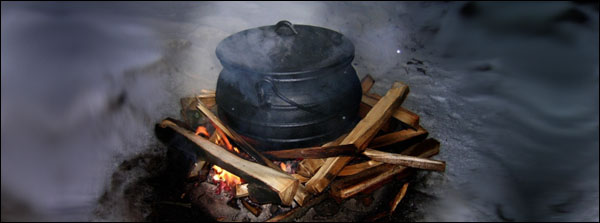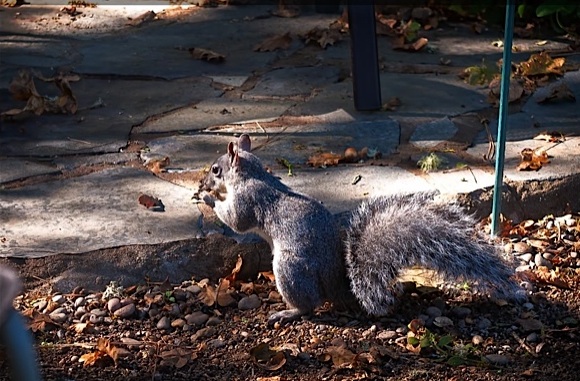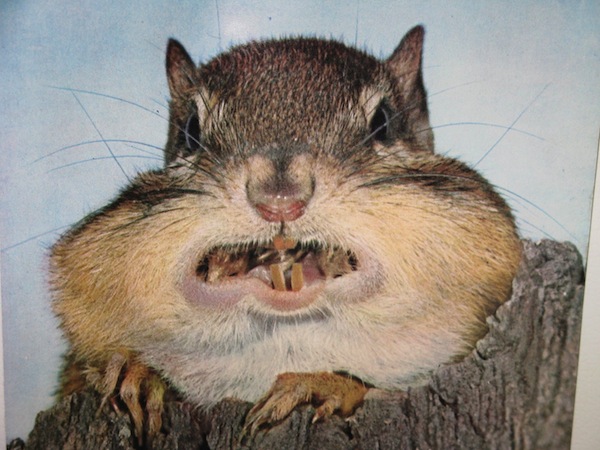Survival of The Busiest

“There seems little point to all their frenetic busy-work. I want to say to them, ‘Kick back and loll about under a hellebore leaf, for crying out loud! Crack open a root beer, contemplate the Fall Equinox with equanimity among your peers. Brag about the fullness of your tail to your girlfriend. Help the rest of us re-define sloth—or Paradise.’” Anita Sullivan
The Highest Cauldron
By Anita Sullivan

 EUGENE Oregon—(Weekly Hubris)—9/30/2013—First, there’s the squirrel, busy young fool. Here in Oregon’s Willamette Valley, from late August through late October, white-oak trees are dropping acorns so fast that the squirrels sometimes have to spend extra time clearing acorns off a spot of ground to give them space to bury one (maybe they should carry little umbrellas).
EUGENE Oregon—(Weekly Hubris)—9/30/2013—First, there’s the squirrel, busy young fool. Here in Oregon’s Willamette Valley, from late August through late October, white-oak trees are dropping acorns so fast that the squirrels sometimes have to spend extra time clearing acorns off a spot of ground to give them space to bury one (maybe they should carry little umbrellas).
From morning to night, as far as I can see in my sporadic observations from behind various windows, the sinewy little animals are responding to an obsolete Squirrel Survival Directive: “Bury Enough Acorns to Get Us Through the Next Terrible Winter.”
Since it almost never snows here, and there are certainly plenty of food-producing trees, our local gray and red squirrels would never be in danger of not surviving if they went on a sit-down strike against instinct and refused to bury their daily quota of acorns. How long is it going to take for them to figure this out?
There seems little point to all their frenetic busy-work. I want to say to them, “Kick back and loll about under a hellebore leaf, for crying out loud! Crack open a root beer, contemplate the Fall Equinox with equanimity among your peers. Brag about the fullness of your tail to your girlfriend. Help the rest of us re-define sloth—or Paradise.”
Early in the morning, before sunrise, they are hard at it. I see the process like a film unrolling. A squirrel comes down the oak tree trunk, waddles through ivy, crawls across fern until suddenly—“Hey! Waddya know, an acorn!” It stops (I’m using “it” as a personal pronoun here, meaning I have no idea if the squirrel is male or female, but it is definitely not neuter), picks up a fat green acorn from under its foot and stuffs the nut into its mouth. After a few little decision-making jerks, it heads sideways, or backwards, or forwards until it intuits a suitable burying spot. Here it stops, bends over and digs frantically as if it were being followed by a gang of baying and drooling hounds. It spits the acorn into the hole, covers it up, and raises its head to check out the rapidly evolving situation. With a little shake, the squirrel resets itself to “Start” again, and begins the search for a new nut.

Such intense coveting and cloistering of acorns is obviously not essential preparation for the lean months ahead, and probably has not been for many years. Rather, these squirrels are carrying on what has turned itself into a ritual. They are continually re-enacting a set of motion patterns that are built into their genes from generations of natural selection in times gone by. This behavior has simply become what they do as part of their squirrel identity and heritage. The little animals are performing the annual Bury the Acorn Ceremony, which once in their distant past (and which is probably still true for their New England cousins), served as a core survival pattern.
There is a sense, I believe, in which burying the acorns (or whatever else is available for them to eat-and-bury) is the core ritual of squirrels, and everything—I mean every thing—they do is some sort of spin-off from its fairly loose set of engrained gestures. Even down to their “squirrelly” behavior crossing the street, where they scamper forward a few steps and then come to a complete stop before scampering forward, or backward, again. The pavement is too hard for digging, but they can still confuse potential acorn thieves by these jerky movements. Cars, unfortunately, remain indifferent to such strategies.
Does every creature have its core ritual? Do humans? If we regard the obvious shared need among all living beings to stay alive as long as possible through the basic acts of eating, sleeping, procreating, defecating, and communicating—each distinct group of us performs and prioritizes these acts in a unique way; and the ways involve a myriad of arabesques, feints, deflections, ornamentations, short-cuts, tricks, whimsical experiments, and sheer jaw-dropping innovations.
What, I wonder, is the core ritual of humans? Could we change it, please?
![]()
Note: The first image above is by photographer Tim Sullivan; the second derives from http://blogs.lifeandscience.org/keepers/tag/squirrels/.
6 Comments
Will Balk, Jr
Oh, mercy! Another wonderful, insightful, and funny piece from the incomparable Anita Sullivan. Well-observed and well said.
Anita Sullivan
Thanks so much, Will!
Ginny Furtwangler
What fun to watch squirrels. They run round and round and round, like humans, their goals–except for burying–seem exhausting and unfathomable to the human eye, and they make us laugh, always a good thing.
Thanks, Anita. I had wondered about the squirrels habit of stopping halfway across a street.
diana
I loved it. So well observed, so beautifully described, you had me seeing squirrels again and missing them — no sign of these creatures in Attica or Andros. And then you draw such an unexpected conclusion. Brilliant essay, Anita mou.
Elizabeth Boleman-Herring
Anita, I KNOW I could just send you an email, but I’d rather join the conversation here. Living amongst (many, many) squirrels, and (a similar number of) homo sapiens, as I do, a light bulb went off in my head when you slid, giggling and hurrahing, into your wonderful “conclusion” above. I love the way your mind turns on a dime, and takes us all into a significantly different dimension/higher plane. What you do in each of your essays is what I always try to do, and often fail to achieve . . . and you do it with such grace and brevity. I drove into Manhattan today, and observed our shared human core rituals in the behavior of drivers. The thing is, I’m conscious of what I’m doing/my knee-jerk reactions. I don’t see much evidence of consciousness among us, as a group. I still may cut off a driver at a merge–well, I’m trying to get Dean to the doctor–but I make eye contact, wave an apology, express thanks/dismay, etc. We do, all, need to change, please: we need, first, to become conscious of . . . our shared acorn burying rituals. Etc. Love you, and your writing, My Dear Friend.
Anita Sullivan
Thanks, everybody. So sweet to hear from fellow writers whose work I admire and relish. Today, by the way, I watched a squirrel start from one side of the street and scamper directly to the other side, in a very purposeful way, no dithering. I wondered if evolution is catching hold. . . . .